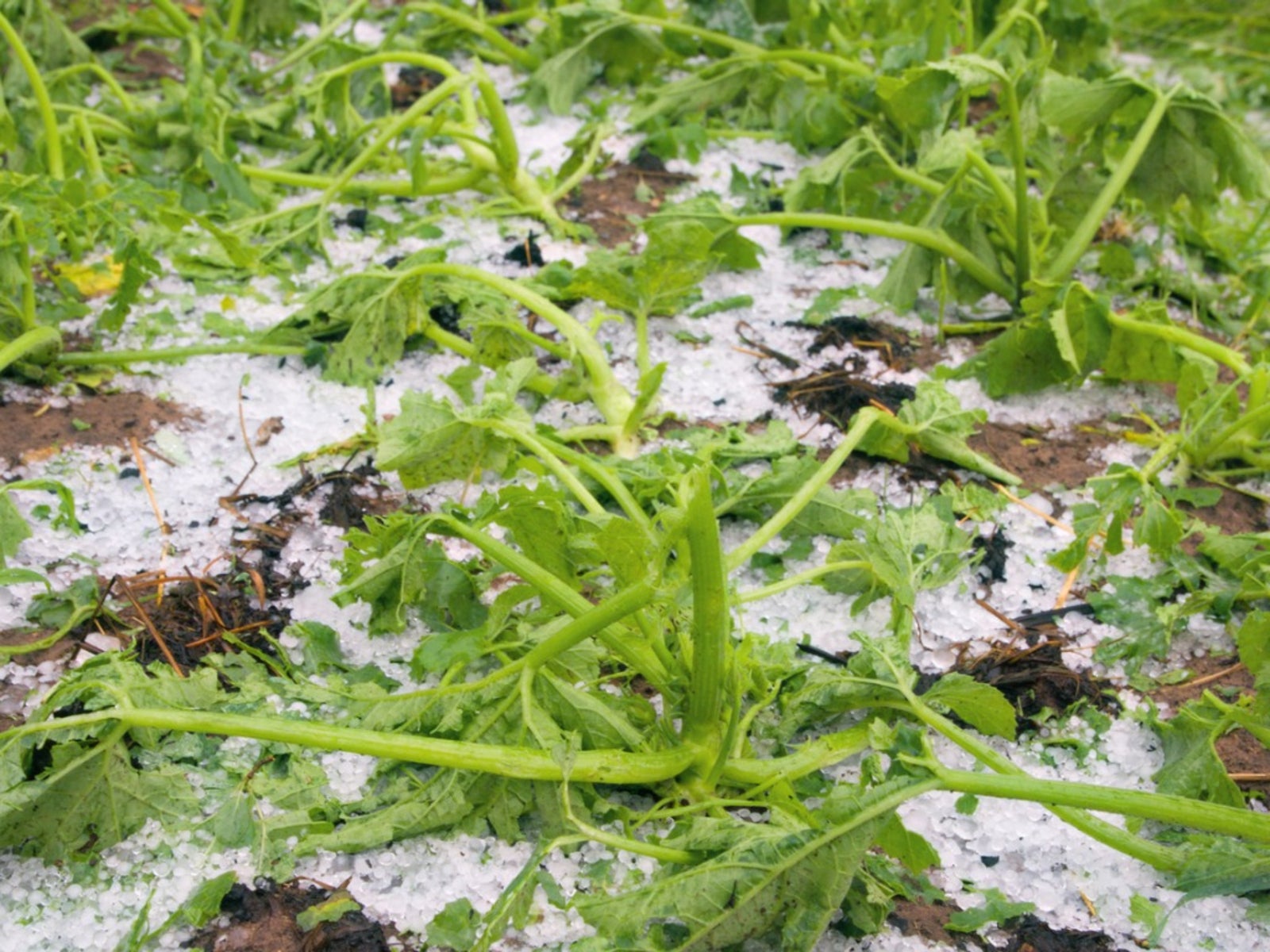Hail Crop Damage: How To Care For Hail Damaged Plants


You can feel the ping of hailstones on your skin and your plants can too. Their sensitive leaves become shredded, pock marked, or ripped by hail. Hail crop damage can severely decimate the harvest. There is even hail damage to trees, which varies in severity depending upon the type of tree and the force and size of hail that falls. After a hard hail, you will need to know how to care for hail damaged plants and return them to their natural beauty.
Hail Crop Damage
Damage to plant leaves is most severe when hail falls in spring. This is because the majority of plants are sprouting and growing tender new leaves and stems. Hail crop damage in spring can completely kill seedlings. Hail later in the season will reduce harvests by knocking fruit off plants. Hail damage to trees shows up as split and broken stems. The tips and tops of trees become scarred and pitted by the hail. This can increase the chance of disease, insects, or rot. Large leaved ornamental plants show the most obvious damage. Plants like hosta will get shot holes through the leaves and shredded tips on foliage. All hail damage can affect the health and beauty of plants.
How to Care for Hail Damaged Plants
Fixing hail damage on plants is not always possible. The best approach is to clean up the debris and trim off broken stems and leaves. The hail damage to trees may require you to prune away the most affected branches. If hail occurs in spring and you have not yet fertilized, an application of food to the impacted plants can help them regrow new foliage. Remove damaged fruits, which will attract insects. Wounds that are minor will heal but benefit from an application of fungicide to prevent rot from entering before the wounds are able to seal. Plants damaged late in the season benefit from a layer of mulch around the base of the plant to help it survive winter. Some plants are too heavily affected and fixing hail damage is not possible. These plants should be removed and replaced.
Preventing Hail Damage in Gardens
In areas that routinely get severe hailstorms, it is possible to be reactive and protect plants from damage. Have ready buckets, garbage cans, or other items to put over plants. Use a tarp tented over the vegetable garden and anchored with stakes. Even blankets are useful to cover lower tree canopies and prevent foliar and fruit damage. Preventing hail damage in gardens relies on careful assessment of weather conditions. Listen to weather reports and react quickly to keep plants from experiencing pounding hailstorms. When you act quickly, much of the damage is prevented and plants will produce bountiful crops and beautiful displays.
Sign up for the Gardening Know How newsletter today and receive a free copy of our e-book "How to Grow Delicious Tomatoes".

Bonnie Grant is a professional landscaper with a Certification in Urban Gardening. She has been gardening and writing for 15 years. A former professional chef, she has a passion for edible landscaping.